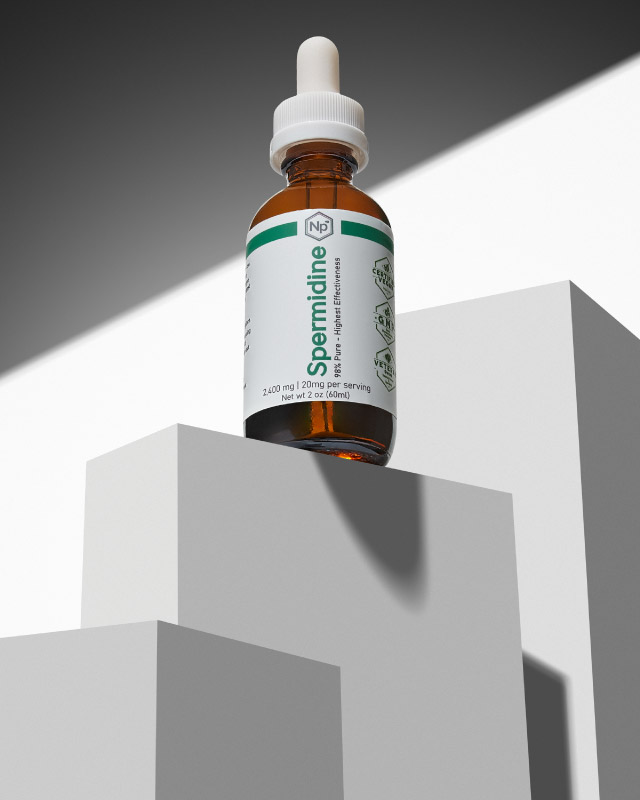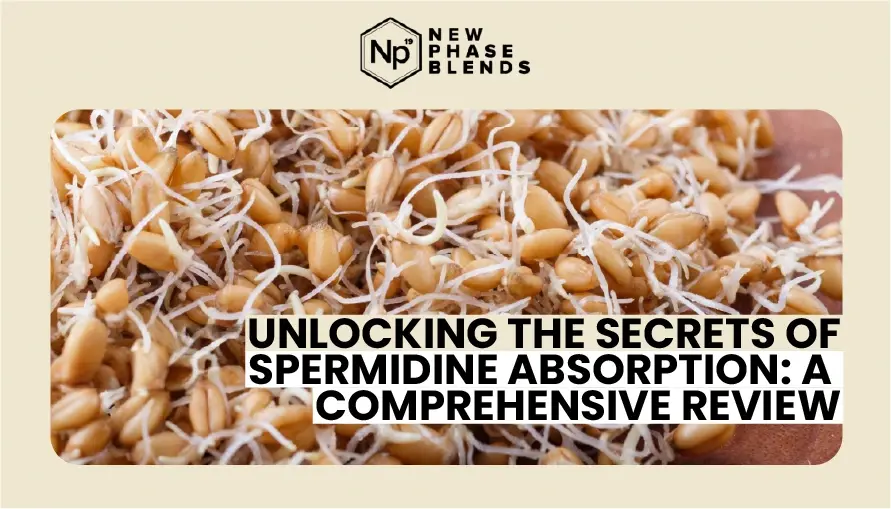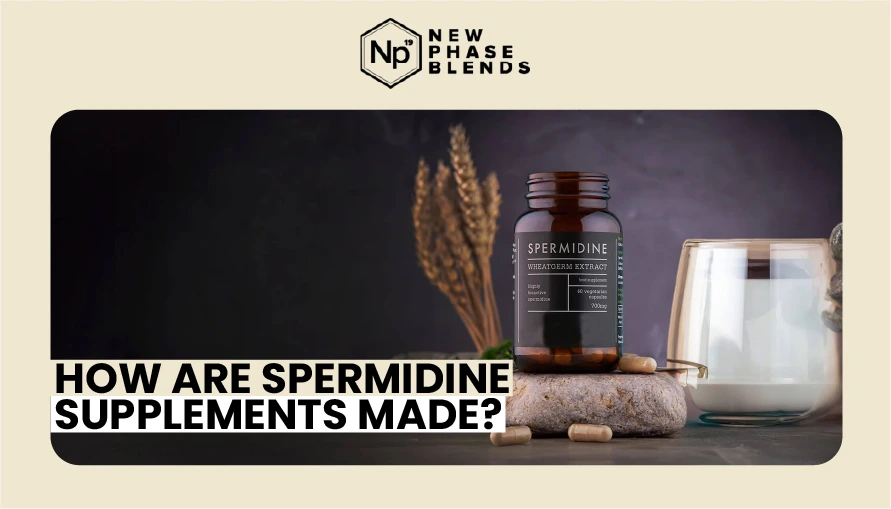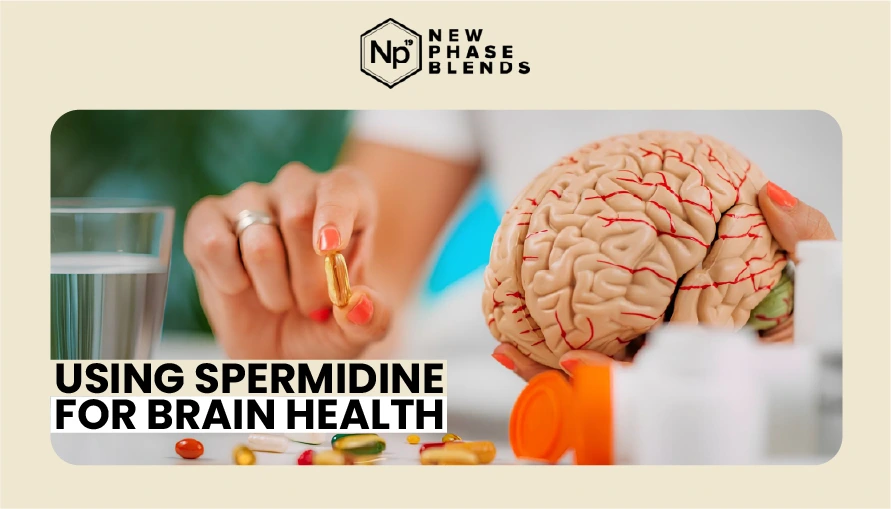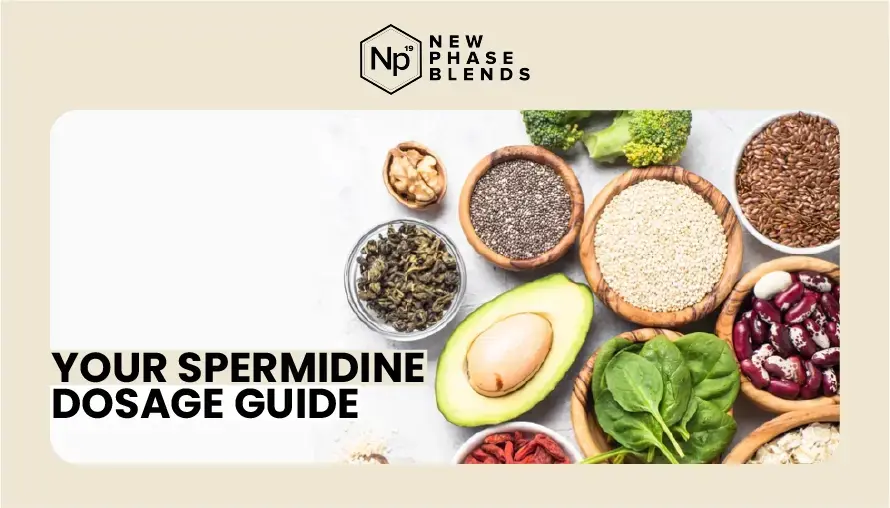Are you searching for natural ways to support your body’s cellular health and longevity? The answer might be hiding in your home kitchen. Spermidine, a naturally occurring compound found in various foods, has been gaining attention for its potential health benefits.
As someone who has researched nutritional compounds and their effects on health for over a decade, I’ve compiled this comprehensive guide to help you understand what spermidine is and identify the top superfoods that contain this powerful compound. By the end of this article, you’ll know exactly which foods to add to your shopping list to boost your spermidine intake naturally.
What Is Spermidine and Why Should You Care?
Spermidine belongs to a group of compounds called polyamines that play crucial roles in cellular functions. First discovered in seminal fluid (hence its name), spermidine is now recognized as an important compound present in all living cells. What makes spermidine particularly interesting is its role in a process called autophagy—essentially your body’s cellular cleaning and recycling system.
As we age, our natural spermidine levels tend to decline, which may contribute to various age-related health issues. Research suggests that higher dietary intake of spermidine is associated with several health benefits:
- Enhanced cellular renewal
- Support for heart health
- Potential cognitive benefits
- Possible lifespan extension (based on animal studies)
Given these potential benefits, incorporating spermidine-rich foods into your diet could be a simple yet effective strategy for supporting overall health.
Top 10 Spermidine-Rich Foods You Should Know About
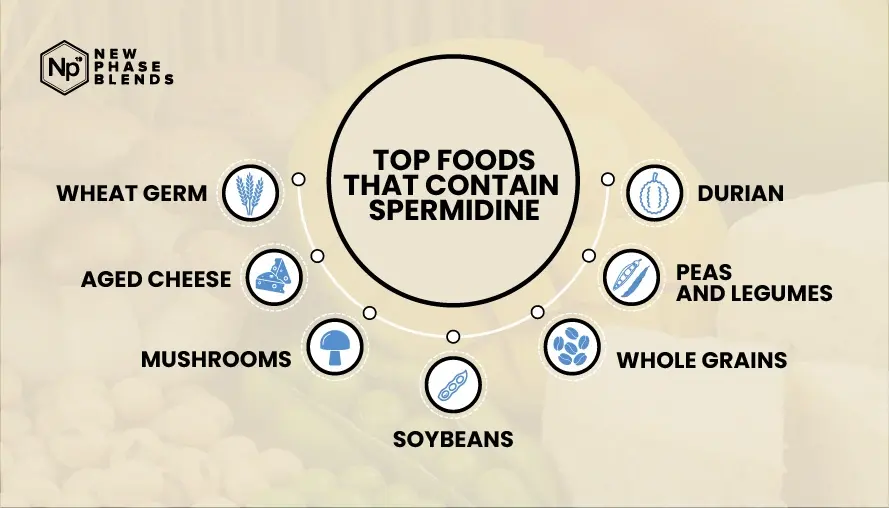
When it comes to foods high in spermidine, nature offers plenty of delicious options. Here are the top superfoods that contain significant amounts of this beneficial compound:
1. Wheat Germ: The Spermidine Champion
Wheat germ stands out as one of the richest dietary sources of spermidine, containing approximately 243 mg per kg. This often-overlooked food ingredient can easily be incorporated into your daily meals by:
- Sprinkling it on yogurt or oatmeal
- Adding it to smoothies for a nutritional boost
- Using it in baking recipes as a partial flour substitute
A small two-tablespoon serving provides a significant amount of spermidine along with other nutrients like vitamin E and B vitamins.
2. Aged Cheese: Flavorful and Functional
The fermentation process involved in cheese-making increases polyamine content, making aged cheeses excellent sources of spermidine. Varieties particularly high in spermidine include:
- Aged cheddar
- Parmesan
- Blue cheese
- Emmental
The aging process contributes to both the distinctive flavors and the increased spermidine content, with levels ranging from 39-200 mg per kg depending on the specific cheese and aging duration.
3. Mushrooms: Fungi with Benefits
Various mushroom varieties offer impressive amounts of spermidine. Shiitake mushrooms are particularly notable, containing approximately 67 mg of spermidine per kg. Other mushroom varieties with good spermidine content include:
- Portobello
- Oyster
- White button
Beyond spermidine, mushrooms provide additional health benefits through their beta-glucans and antioxidant compounds.
4. Soybeans and Soy Products
Soybeans and their derivatives rank among the highest plant-based sources of spermidine. Natto (fermented soybeans) contains particularly high levels—approximately 65-340 mg per kg—making it one of the richest dietary sources available. Other soy products with good spermidine content include:
- Tofu
- Edamame
- Tempeh
- Soy milk
The fermentation process further enhances the polyamine content in products like natto and tempeh.
5. Whole Grains: Everyday Essentials
Whole grains provide a practical daily source of spermidine. Options worth incorporating include:
- Brown rice
- Whole wheat
- Oats
- Barley
These grains contain moderate amounts of spermidine (10-30 mg per kg) and offer the added benefits of fiber and other nutrients essential for overall health.
6. Peas and Legumes: Plant-Based Powerhouses
Various legumes serve as excellent plant-based sources of spermidine, with fresh green peas containing approximately 30-70 mg per kg. Other legumes with notable spermidine content include:
- Lentils
- Chickpeas
- Black beans
These versatile ingredients can be incorporated into countless dishes while supporting your spermidine intake and overall nutrition.
7. Durian: The Tropical Spermidine Source
For those with adventurous palates, durian fruit contains impressive levels of spermidine—approximately 40-50 mg per kg. While its strong aroma might be challenging for some, its creamy texture and unique flavor profile make it a fascinating addition to a spermidine-rich diet.
How to Maximize Spermidine Benefits in Your Diet
Simply knowing which foods contain spermidine isn’t enough—understanding how to incorporate them effectively makes all the difference. Here are practical strategies to optimize your dietary spermidine intake:
Create Spermidine-Rich Meal Combinations
Maximize your intake by combining multiple spermidine sources in single meals. Consider these combinations:
- Mushroom and aged cheese omelet with whole grain toast
- Grain bowl with wheat germ, legumes, and vegetables
- Stir-fry with tofu, mushrooms, and brown rice
These combinations not only increase spermidine intake but also provide complementary nutrients.
Preservation and Preparation Matters
How you prepare spermidine-rich foods affects their beneficial content. Keep these guidelines in mind:
- Gentle cooking methods (steaming, light sautéing) help preserve polyamine content
- Fermentation can increase spermidine levels in certain foods
- Fresh foods generally contain higher levels than heavily processed alternatives
Incorporating these practices helps maintain the integrity of these beneficial compounds.
Common Questions About Dietary Spermidine
Many people have questions when first learning about spermidine-rich foods. Here are answers to some frequently asked concerns:
Is It Possible to Get Enough Spermidine From Diet Alone?
Yes, a varied diet that regularly includes foods high in spermidine can provide sufficient amounts to potentially experience health benefits. Research suggests that Mediterranean and Japanese diets naturally provide higher spermidine levels, which may contribute to the longevity observed in these populations.
Are There Any Side Effects From Consuming Spermidine-Rich Foods?
For most people, consuming spermidine through natural food sources is considered safe and beneficial. Unlike supplements, which may provide concentrated amounts, food sources offer spermidine in balanced proportions alongside other nutrients.
Conclusion: Embracing Spermidine-Rich Foods for Better Health
Incorporating spermidine-rich foods into your diet represents a practical approach to supporting cellular health and potentially extending both lifespan and healthspan. The diverse array of foods containing this beneficial compound—from wheat germ and aged cheeses to mushrooms and legumes—means there are options suitable for nearly any dietary preference or restriction.
Rather than viewing spermidine as a miracle compound, consider it one valuable component of a balanced, nutrient-dense diet. By regularly including these top superfoods that contain spermidine in your meals, you’re supporting your body’s natural processes while enjoying delicious and nutritious foods—a winning combination for long-term health and wellbeing.
Start small by incorporating one or two spermidine-rich foods into your weekly meal plan, then gradually expand your repertoire as you discover new favorites. Your cells will thank you for it.




